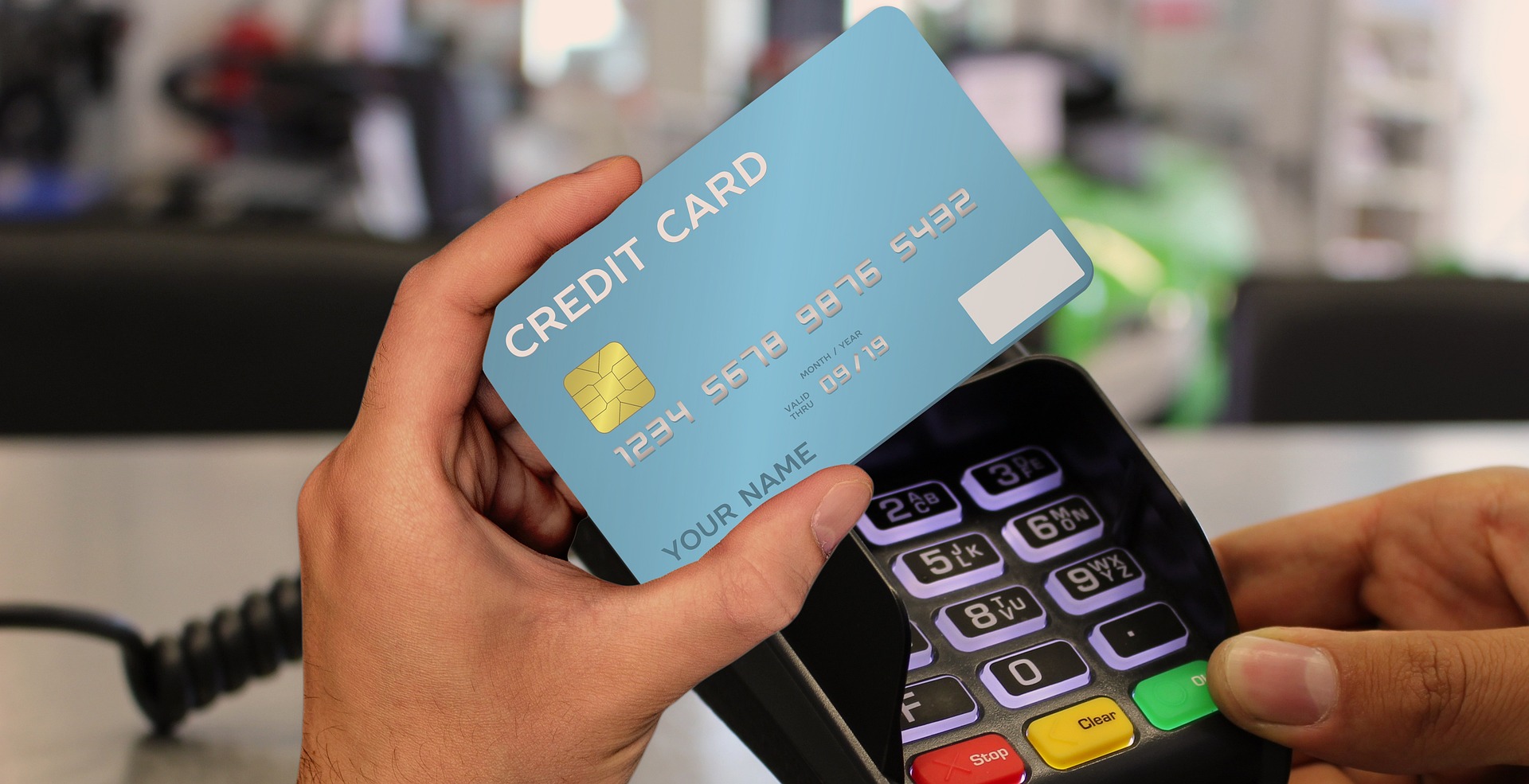How Do Credit Cards Work: Demystifying Their Usage – FangWallet

Have you ever found yourself swiping a credit card at the checkout, wondering how this small piece of plastic enables you to make purchases without immediately parting with your cash? You’re not alone. Credit cards can seem like a mysterious tool—a blend of convenience and complexity. In this article, we’ll break down how credit cards work, explore their advantages, and highlight potential pitfalls. By the end, you’ll not only understand the basics of credit cards but also feel empowered to use them wisely in your financial life. Let’s dive in and simplify the process of using credit!
Understanding the Basics of Credit Cards and How They Work
Credit cards may seem complex at first, but understanding the fundamentals can significantly improve your financial journey. At their core, credit cards allow you to borrow money up to a certain limit to make purchases or pay bills, with the expectation that you’ll pay the money back later—typically within a billing cycle. Think of a credit card as a financial tool that lets you access funds when you don’t have cash on hand, but with the responsibility of repaying what you’ve borrowed, often with interest if the balance isn’t paid in full. Here are a few key elements to understand:
Credit Limit
This is the maximum amount you can borrow on your card. Try to stay well below this limit to maintain a healthy credit score.
Interest Rates
These vary by issuer and type of card. Understanding your APR (Annual Percentage Rate) helps you assess the cost of carrying a balance.
Billing Cycle
Typically lasts around 30 days, during which your purchases accumulate. Payment is usually due at the end of this period.
Minimum Payment
The lowest amount you can pay to avoid late fees. However, it’s important to pay more when possible to reduce interest costs.
Here’s an example to illustrate how charges can add up over a month:
| Transaction | Amount |
|---|---|
| Monthly Subscription | $15 |
| Dining Out | $50 |
| Groceries | $100 |
| Total | $165 |
In this example, if you pay off the full $165 by the due date, you’ll avoid interest charges and keep your credit utilization low, which positively impacts your credit score. Being mindful of how you use credit cards helps you manage your finances and build a healthy relationship with credit.
Your Credit Card Account
A credit card account is a revolving line of credit that allows you to borrow money from a card issuer to make purchases, pay bills, or even transfer balances from other cards. When you apply for a credit card account, a bank or credit union (the card issuer) assesses your creditworthiness based on your credit history, income, and other factors. Once approved, you’re assigned a credit limit, which is the maximum amount you can borrow on that card. It’s essential to manage this credit card account wisely by making timely payments and keeping your balance below your credit limit to maintain a healthy credit score. Regular monitoring of your account can help you track spending, avoid fees, and ensure you’re making the most of your credit card benefits.
Credit Card Limits
Credit card limits are set by card issuers and represent the maximum amount you can borrow on your card. Understanding your credit limit is crucial, as it helps you manage your spending and avoid overspending. Your credit limit is determined based on several factors, including your credit score, income, and credit history. As you responsibly use your credit card and make on-time payments while keeping your account in good standing, there’s a chance that your issuer may increase your limit, providing you with more available credit. However, it’s vital to use only a portion of your credit limit—ideally keeping your utilization below 30%—to maintain a good credit score. Keeping track of your available credit can help you make informed financial decisions and avoid unnecessary debt.
Exploring Interest Rates and Fees: What You Need to Know
Understanding how interest rates and fees work is crucial for managing your credit card effectively. Think of interest as the cost of borrowing money. If you carry a balance from month to month, the credit card issuer will charge you interest on that amount. Most credit cards come with a Variable APR (Annual Percentage Rate), which means the interest rate can change based on economic factors or your creditworthiness. It’s wise to familiarize yourself with your card’s specific rate, as it significantly impacts how much you owe over time.
Common Credit Card Fees
When it comes to fees, credit cards can catch you off guard. Here are some common credit card fees to watch for:
- Annual Fees: A yearly charge for having the card.
- Late Payment Fees: Charges incurred when you miss a payment due date.
- Foreign Transaction Fees: Additional charges for purchases made abroad.
- Cash Advance Fees: Fees for withdrawing cash from your credit line.
To help you understand how these fees compare, here’s a simple breakdown:
| Card Type | Annual Fee | Cash Advance Fee | Foreign Transaction Fee |
|---|---|---|---|
| Standard Visa | $0 | $10 or 5% of amount | 3% |
| Premium Rewards | $95 | $15 or 5% of amount | 1% |
| Travel Card | $0 | $0 | 0% |
By being aware of these rates and fees, you can make informed decisions about managing your credit card usage, helping you avoid unnecessary expenses and maintain healthy finances.
How Does Credit Card Interest Work?
Understanding how credit card interest works is vital for managing your finances effectively. When you carry a balance on your credit card, interest charges are applied to that amount, typically calculated based on your Annual Percentage Rate (APR). If you pay off your balance in full at the end of the month, you can usually avoid interest charges altogether, benefiting from a grace period. However, if you only make the minimum payment or carry a balance, interest will accrue on the remaining amount, increasing your overall debt. It’s essential to familiarize yourself with your card’s interest rates and payment terms to make informed decisions and avoid accumulating unnecessary costs.
Balance Transfers and Cash Advances
Balance transfers and cash advances are two features that come with credit cards, but they come with different terms and potential costs. A balance transfer allows you to move an existing balance from one credit card to another, typically to take advantage of a lower interest rate. However, it’s important to be aware of any associated fees, which can range from 3% to 5% of the transfer amount. Cash advances, on the other hand, let you withdraw cash against your credit limit, but they often come with higher interest rates and fees compared to regular purchases. It’s advisable to consider these options carefully and use them sparingly to avoid increasing your credit card debt.
Common Credit Card Fees
Credit cards can offer convenience, but they often come with various fees that can add up quickly. Here are some common credit card fees to be aware of:
- Late Payment Fee: Charged if you miss your payment due date.
- Annual Fee: A yearly fee charged for having the card, often associated with premium rewards cards.
- Foreign Transaction Fee: Applied for purchases made outside the U.S., typically ranging from 2% to 3%.
- Balance Transfer Fee: A fee for transferring a balance from one card to another, usually between 3% to 5%.
- Cash Advance Fee: Charged when you withdraw cash from your credit card, often a percentage of the amount withdrawn.
Being informed about these fees can help you avoid unnecessary costs and make the most of your credit card benefits.
The Importance of Your Credit Score in Managing a Credit Card
Your credit score plays a crucial role in managing your credit card effectively. A strong credit score not only opens the door to better credit card offers but also ensures you receive favorable terms, such as lower interest rates and higher credit limits. Think of your credit score as a report card for your financial behavior; the higher your score, the more trustworthy you appear to lenders. This can significantly impact your purchasing power and financial flexibility.
Tips for Maintaining a Healthy Credit Score
To maintain a healthy credit score, consider these essential practices:
- Pay Your Bills on Time: Timely payments are a major factor in your credit score. Missing just one payment can have lasting repercussions.
- Keep Your Credit Utilization Low: Aim to use less than 30% of your available credit. This shows lenders that you’re responsible with credit.
- Avoid Opening Too Many Accounts at Once: Each application can slightly reduce your score. Space out your applications to maintain stability.
Understanding how your credit score interacts with your credit card usage empowers you to make wiser financial choices. Here’s a brief overview of typical credit score ranges and their implications:
| Credit Score Range | Credit Quality |
|---|---|
| 300 – 579 | Poor |
| 580 – 669 | Fair |
| 670 – 739 | Good |
| 740 – 799 | Very Good |
| 800 – 850 | Excellent |
By taking charge of your credit score, you’re not just managing a credit card; you’re setting the foundation for a brighter financial future.
How Do Credit Cards Affect Your Credit Score?
Credit cards can significantly impact your credit score in various ways. One of the most crucial factors is credit utilization, which refers to the amount of credit you’re using compared to your total available credit. Keeping your utilization below 30% is generally viewed favorably by credit bureaus and can help boost your score. Additionally, timely payments contribute positively to your credit history, while missed or late payments can have detrimental effects. Understanding how credit bureaus evaluate your credit behavior allows you to make more informed decisions about your credit card usage and overall credit management, and it’s crucial to recognize the role that credit bureaus play in the credit score calculation.
Smart Spending Strategies: Maximizing Benefits While Avoiding Debt
Using a credit card wisely requires a balance between enjoying its benefits and avoiding the pitfalls of high debt. Here are some practical tips to help you use your card responsibly:
Pay Off Your Balance Monthly
Avoid paying interest by clearing your balance every month.
Maximize Rewards
Many cards offer rewards like cash back, travel points, or miles. Be sure to use your card for purchases that earn the best rewards.
Monitor Your Spending
Regularly check your statements to ensure you’re staying within budget and not accumulating unnecessary debt.
By applying these strategies, you’ll not only avoid unnecessary debt but also make the most of your credit card’s benefits.
Conclusion: Credit Cards Are a Tool, Not a Trap
Credit cards, when used responsibly, can be a valuable tool for managing finances, building credit, and making purchases more convenient. By understanding the basics, being mindful of interest rates and fees, and using strategies to avoid debt, you can leverage credit cards in a way that benefits your financial well-being. The key to success lies in thoughtful, deliberate use—ensuring that you always stay on top of your payments and avoid the trap of overspending. With the right approach, your credit card can serve as an asset, rather than a source of financial stress.
FAQs
How do credit card interest rates work?
Interest is charged on any unpaid balance carried over from month to month, and the rate varies depending on the card and your creditworthiness.
What is the best way to use a credit card?
The best way is to pay your balance in full each month to avoid interest charges and only use it for purchases within your budget.
Can I increase my credit limit?
Yes, you can request an increase in your credit limit, but the issuer will evaluate your credit history and payment behavior before approval.
How does my credit score affect my credit card?
A higher credit score can result in lower interest rates, higher credit limits, and more favorable terms.

Reviewed and edited by Albert Fang.
See a typo or want to suggest an edit/revision to the content? Use the comment form below for feedback.
At FangWallet, we value editorial integrity and open collaboration in curating quality content for readers to enjoy. Much appreciated for the assist.
Did you like our article and find it insightful? We encourage sharing the article link with family and friends to benefit as well – better yet, sharing on social media. Thank you for the support! 🍉
Article Title: How Do Credit Cards Work: Demystifying Their Usage
https://fangwallet.com/2025/02/08/how-do-credit-cards-work/The FangWallet Promise
FangWallet is an editorially independent resource – founded on breaking down challenging financial concepts for anyone to understand since 2014. While we adhere to editorial integrity, note that this post may contain references to products from our partners.
The FangWallet promise is always to have your best interest in mind and be transparent and honest about the financial picture.
Become an Insider
Editorial Disclaimer: The editorial content on this page is not provided by any of the companies mentioned. The opinions expressed here are the author’s alone.
The content of this website is for informational purposes only and does not represent investment advice, or an offer or solicitation to buy or sell any security, investment, or product. Investors are encouraged to do their own due diligence, and, if necessary, consult professional advising before making any investment decisions. Investing involves a high degree of risk, and financial losses may occur including the potential loss of principal.
Advertiser Disclosure: This article may contain references to products or services from one or more of our advertisers or partners. We may receive compensation when you click on links to those products or services.
Source: How Do Credit Cards Work: Demystifying Their Usage – FangWallet




